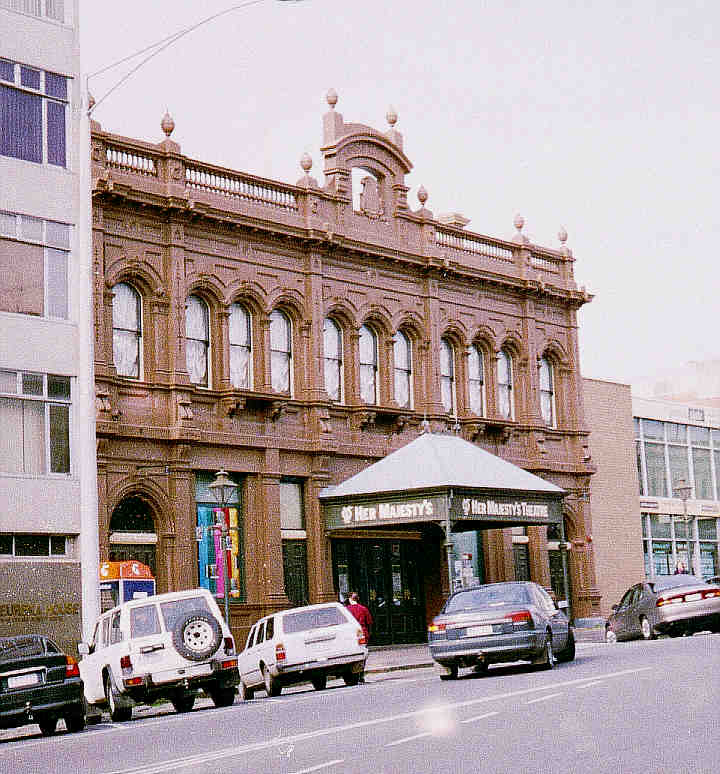
Back to Main Encylopaedia Contents
Her Majesty's Theatre, Ballarat

In 1971, the Compton organ from the Ritz (ABC) Cinema, Warrington, Lancashire, England was purchased and imported to Melbourne by TOSA (Vic) member Bill Witt. [Vox, December, 1971, p. 5] The instrument contained seven ranks of pipes and was controlled from a three-manual console. It was opened at Warrington by Alex Taylor. [Inkster, D S, "Highlights of Union Theatres - Part 4", Theatre Organ Review, Leeds, England, Vol XI, No. 44, December, 1957, p. 12] At that time there were 174 cinemas in the circuit, with a further 76 "pending". [Inkster, D S, "Highlights of Union Theatres - Part 2", Theatre Organ Review, Vol XI, No. 42, June, 1957, p. 6] The cinema and its organ opened on 23 August, 1937. [Memorial Theatre Ballarat, Programme for the Official Opening of the Organ, 12 June, 1982, p. 10] Union Theatres was noted for its lavish stage shows and organ presentations throughout its vast chain of cinemas. Its rapid expansion and extravagant operations led to its demise later the same year. On 1 November, 1937, the company was taken over by Associated British Cinemas (ABC). [Inkster, D S, "Highlights of Union Theatres - Part 4", Theatre Organ Review, Vol XI, No. 44, December, 1957, p. 12]
Harold Ramsay was appointed Musical Director for Union Theatres in May, 1937, and became Controller of Entertainment in August. [Inkster, D S, "Highlights of Union Theatres - Part 2", Theatre Organ Review, Vol XI, No. 42, June, 1957, p. 6] He was responsible for the design of organs purchased by the circuit, including that at Warrington, and several which had been ordered before the company's collapse, and which, with the theatres under construction, opened under ABC ownership. Harold Ramsay remained to direct entertainment operations for ABC, but on a much restricted budget.
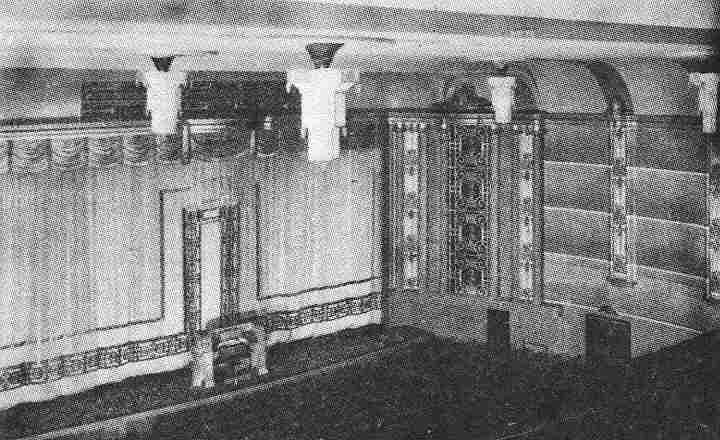
Ritz, Warrington
The Compton organs designed by Harold Ramsay usually incorporated non-standard features, wood Tibias and individual swell shutter motors being found on many of them. He also took a close interest in the instruments, which was reflected in their overall very high quality and tonal finish. They were equipped with huge illuminated glass surrounds of considerable visual complexity, lit from within by coloured lights which mixed and merged through the hues of the rainbow. They were powerfully voiced, as they had to fill large auditoria (seating two thousand or more people) sufficiently to lead the community singing sessions which were a popular feature of organ presentations at the time. The effect of a console erupting from the pit in a blaze of light and with a roar of sound was impressive and guaranteed to attract the interest of the most blasť patron.
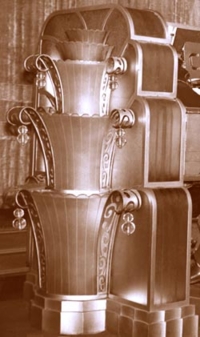
Illumination style fitted to the Warrington console
Warrington's Compton was Opus A 379, and its ranks were; Tromba, Diapason, Tibia, Strings (2 ranks), Flute and Vox Humana. It also had a xylophone, glockenspiel and assorted other percussions and traps. It had neither a chrysoglott nor chimes, as these effects were provided from the Electrone (Melotone) unit which used electrophonic tone-wheel generators to produce a variety of additional tone-colours. That this organ was an early Ramsay design is evident from the inclusion of a Vox Humana. Soon he would specify a Muted Trumpet instead of a Vox in his organs. It is worth noting that three of the ranks (Tromba, Diapason and Tibia) were extended to full 16ft compass. Many Compton organs of this size only had two ranks (usually Tuba and Tibia) available at this pitch.
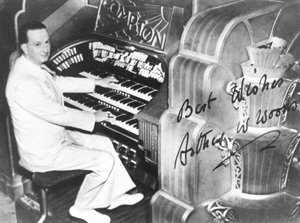
Arthur Woods at the Ritz, Warrington
Both Union and ABC pursued a policy of rotating organists around their theatres, so a large number would have played at Warrington until the organ fell out of regular use in the 1950s. It was, however, maintained regularly until the late 1960s, and thus would have been in a reasonable state of repair and fully playable at the time of its removal from the theatre. When it came to Australia, neither the Electrone unit nor the illuminated console surround accompanied it.
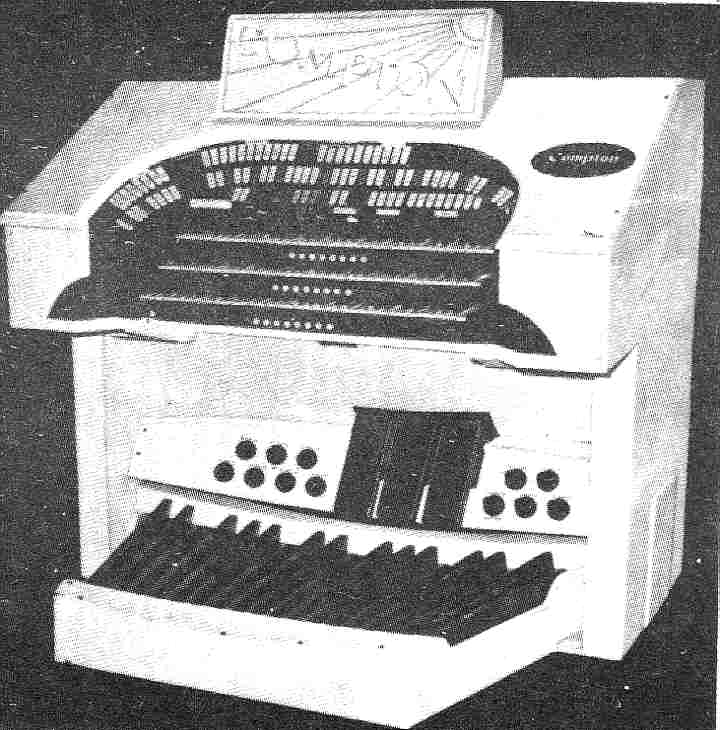
The console as it appeared when it arrived in Australia
Some months after the organ's arrival in Australia, it was announced that Bill Witt had sold it to TOSA (Vic)'s Ballarat chapter, which had been founded on 20 September, 1970, [SA TOSA News, TOSA (SA), Adelaide, April, 1982, p. 7] who intended to install it in that city's Memorial Theatre. [Vox, August, 1972, p. 3]
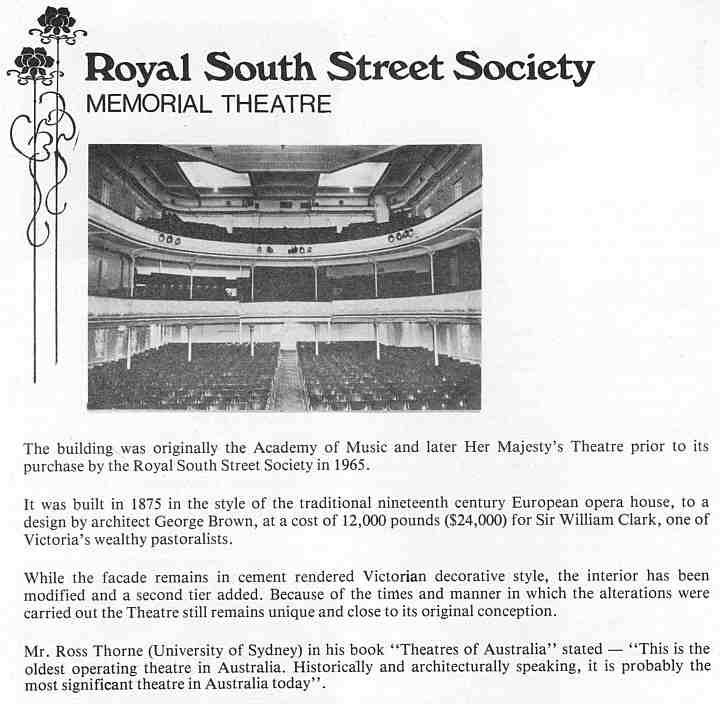
The design of the historic theatre meant that conventional locations would not be possible for the organ's two chambers. Instead, it was decided to locate the sound-producing parts of the instrument beneath the floor of the auditorium, using a basement area under the stalls seating. The basement had to be excavated further to provide adequate height for the pipework to speak properly. The swell shutters were sited to speak into the pit area on either side of the organ console, with chutes to direct the sound upwards into the theatre. Special covers were fitted to the chutes to protect the instrument when not in use, and to prevent anyone falling down them and suffering injury. By 1978, construction of the chambers was virtually complete, and overhaul of the chests and regulators was well under way. [Vox, November, 1978, p. 4]
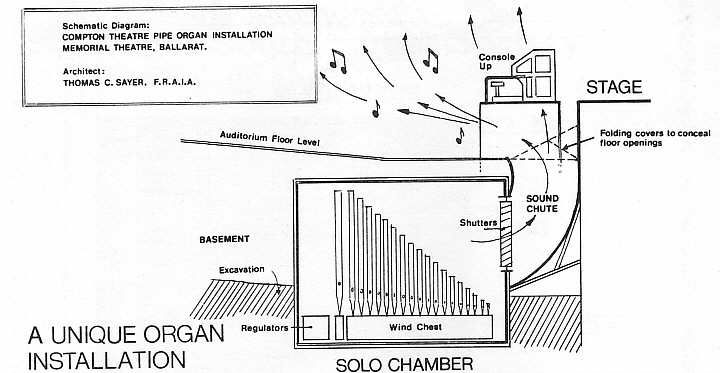
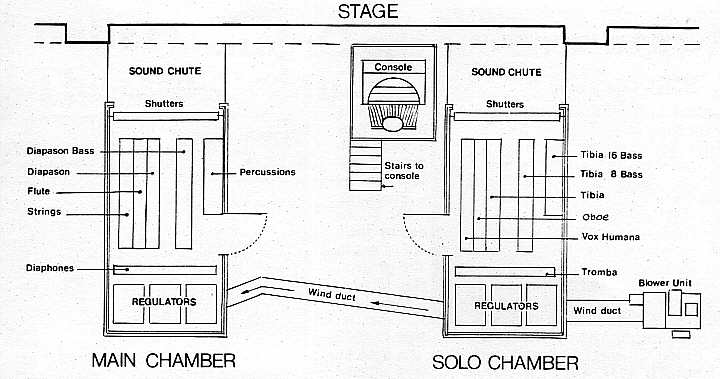
Two additional ranks of pipes were added to the organ during the installation, a clarinet and an oboe. The installation was planned by Tom Sayer, who passed away shortly before the opening of the organ. John Atwell and organ builder George Stephens drew up the final specification. Most of the work was carried out by Ballarat Chapter (later to become the Ballarat Theatre Organ Society) members, with professional assistance, notably from George Stephens for special work and for the final work on the pipes. TOSA members in Melbourne not only supported the project, but carried out most of the wiring. Fundraising was also a major local task, as the total cost of the installation was $59,000.00, of which the purchase price amounted to $8,500.00. [Ballarat Theatre Organ Society brochure, approx. 1984]
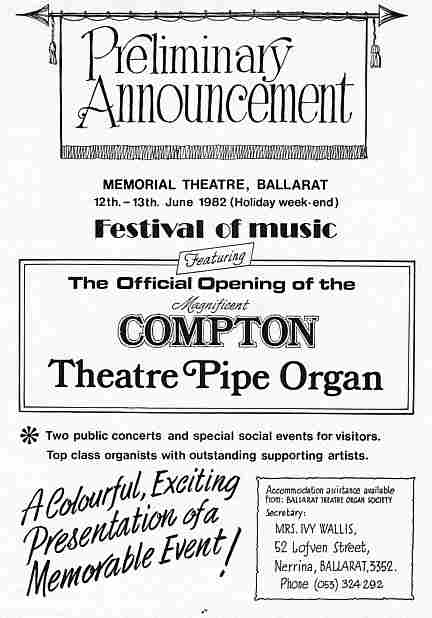
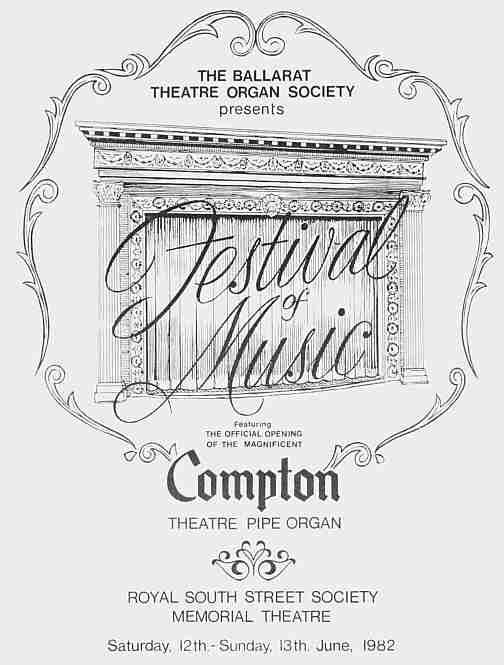
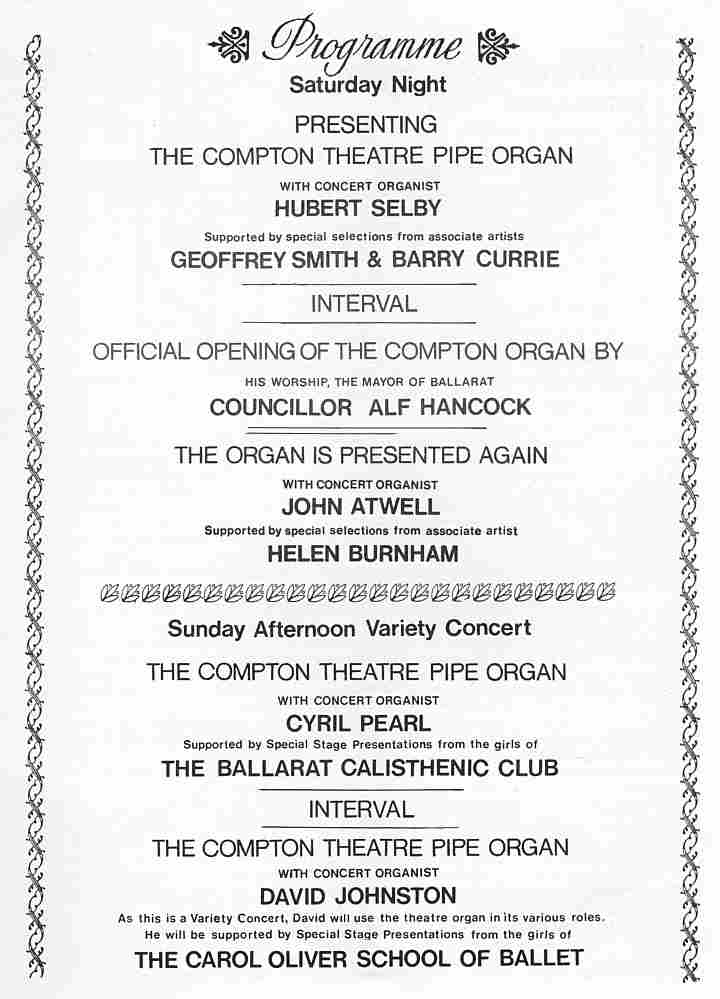
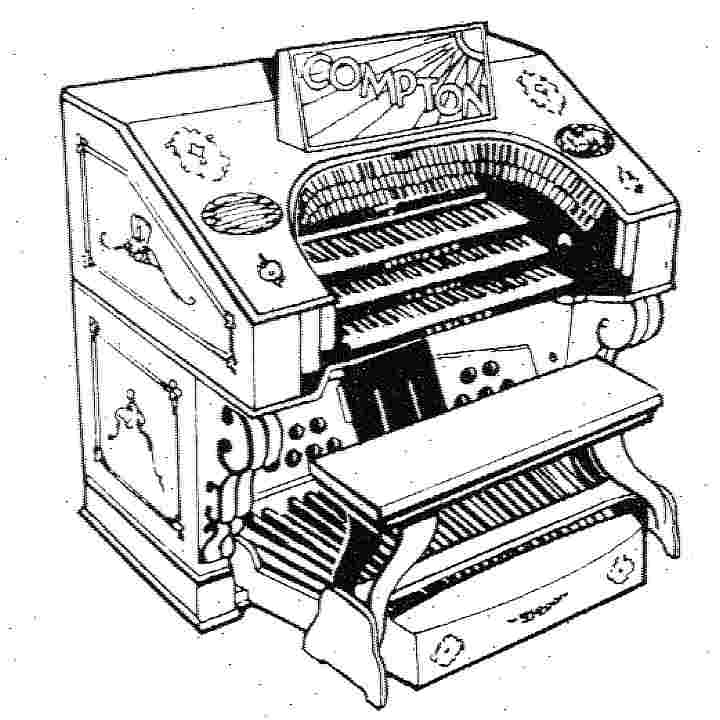
The organ was officially opened on 12 and 13 June, 1982, when Hubert Selby, who, as a former ABC organist in England, had featured the Compton at Warrington, brought up the elegant white and gold console on its lift for its first presentation to the public. Other organists who played at the opening concerts were John Atwell, Cyril Pearl and David Johnston. [Memorial Theatre Ballarat, Programme for the Official Opening of the Organ, 12-13 June, 1982]
%20J%20Ferguson%20photo.jpg)
Photo: John Ferguson
The organ has continued to be used for regular concerts sponsored by the Ballarat Theatre Organ Society. The Memorial Theatre is now known as Her Majesty's Theatre.
%20J%20Ferguson%20photo.jpg)
Photo: John Ferguson
Back to Main Encylopaedia Contents